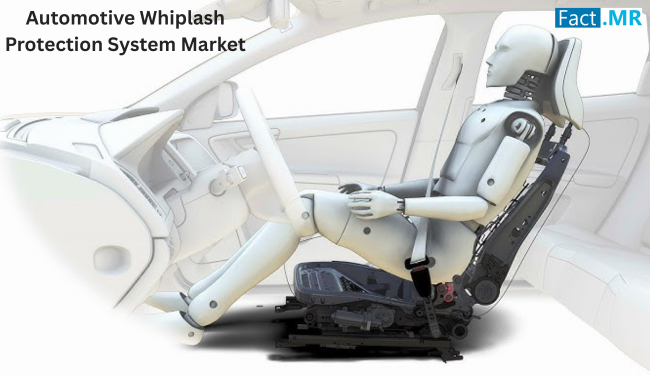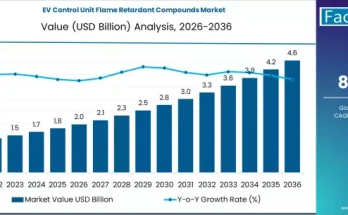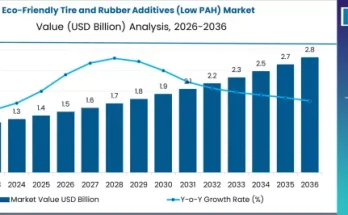At its core, a WPS is a combination of seat and headrest technologies designed to move in sync with the occupant during a collision. For instance, some systems allow the seatback to pivot or collapse to absorb kinetic energy, while reactive head restraints shift forward to better support the head. These coordinated movements serve to limit abrupt spinal motion. This concept dates back to pioneering efforts such as Volvo’s WHIPS, which shifted seat and headrest dynamics to mitigate injury – demonstrating significant reductions in whiplash cases in real-world crashes.
Key Drivers Fueling Market Growth
1. Regulatory Mandates and Safety Ratings
Government regulations and crash-test protocols globally have heightened the emphasis on whiplash protection. Safety assessment bodies are including whiplash performance in their evaluation criteria, prompting OEMs to adopt WPS technologies early in the product lifecycle .
2. Rising Awareness of Injury Risks
Vehicle occupants’ growing awareness around potential neck injuries in collisions is influencing their purchasing behavior. As drivers actively seek safer travel options, automakers are integrating whiplash protection as standard equipment – especially in mid- and premium-level vehicles .
3. Technological Advances
The emergence of smart sensors, AI-driven adjustments, and adaptive seat structures has enhanced the efficacy of whiplash prevention. These systems can now detect collision severity and occupant posture in real time, adjusting support dynamically—a significant step toward responsive occupant protection,
Market Segmentation & Industry Landscape
By System Type
WPS solutions are typically categorized into reactive head restraints and pro-active ones, with reactive systems currently being the preferred choice due to their simplicity and reliability. Pro-active or pendulum-based systems are gaining traction, offering preemptive movement before a collision.
By Vehicle Type
Passenger cars represent the dominant segment for WPS, driven by consumer demand and stricter safety benchmarks in this category. However, the commercial vehicle segment is beginning to show interest, particularly in heavy-duty and fleet applications.
By Sales Channel
Most WPS units are integrated through OEMs, as they come factory-installed with new vehicles. This channel dominates the market, though aftermarket options exist for retrofitting older vehicles, driven by consumer demand for enhanced safety.
Regional Snapshot
-
North America
Early adoption of WPS technologies is seen in North America, guided by robust safety regulations and strong consumer demand. Many leading manufacturers in this region have included whiplash protection as a standard feature in recent vehicle models. -
Europe
Europe maintains a leadership position owing to well-defined safety testing frameworks and strong advocacy for occupant protection. Veteran carmakers across Europe continue to innovate and promote whiplash mitigation. -
Asia-Pacific
While currently trailing North America and Europe, Asia-Pacific is rapidly emerging as a significant player. Investments in road safety and increasing awareness among consumers are driving faster adoption of WPS technologies across the region .
Other regions such as Latin America, the Middle East, and Africa are gradually exploring WPS solutions, though progress remains slower due to varied regulatory emphasis and cost sensitivity.
Trends Shaping the Market
Sensor Integration and AI
Embedding advanced sensing systems within seats is becoming more common. These systems detect occupant posture and imminent collision dynamics, enabling proactive protection—enhancing system responsiveness.
Ergonomics and Seat Personalization
Manufacturers are catering to diverse passenger anthropometrics by optimizing seat ergonomics. Adjustable features that adapt to occupant height and posture are becoming essential for delivering consistent whiplash mitigation across all users .
Sustainability in Materials and Design
As sustainability rises in priority, suppliers are exploring recyclable seat structures and lightweight composites that maintain protective performance. Combining safety with environmental responsibility is emerging as a design principle.
Collaborative Standard Setting
To enhance interoperability and effectiveness, public-private collaborations are focusing on unified WPS standards. OEMs, component suppliers, and regulatory bodies are working together to establish performance benchmarks and test protocols .
Challenges and Barriers
Integration Complexity and Cost
Advanced whiplash protection systems may add to production complexity and vehicle cost. OEMs must weigh these integration challenges, especially when targeting budget-conscious markets.
Lack of Global Standards
With no universally recognized WPS standards, regional disparities in implementation and effectiveness persist. This fragmentation can slow global standardization and affect cross-border adoption.
Slow Adoption in Cost-Sensitive Markets
In developing economies, WPS adoption remains restrained due to limited regulation and tight cost structures. Market growth may lag until safety awareness and regulatory support catch up.
Competitive Landscape
Prominent players in the arena include vehicle safety specialists and major automotive suppliers:
-
Autoliv
-
Robert Bosch GmbH
-
Continental AG
-
Denso
-
Lear Corporation
-
Hyundai Mobis
-
Grammer AG
-
ZF Friedrichshafen
-
Takata
These companies are actively pursuing partnerships with automakers, advancing R&D in intelligent seat systems, and integrating AI-based sensing features.
Outlook: What Lies Ahead
-
Smart, Connected Seats
Expect next-generation WPS incorporating connectivity—vehicles may communicate with infrastructure or other vehicles to predict crash scenarios and adjust seats in anticipation. -
Adoption in Autonomous and Semi-autonomous Vehicles
As the automotive ecosystem shifts toward autonomy, interior cabin safety will become critical. WPS in autonomous vehicles will need to handle multi-directional forces, elevated by non-standard occupant postures. -
Aftermarket Revolution
Retrofit kits enabling seat upgrades in legacy vehicles, especially in regions slow to mandate WPS, could unlock new market niches. -
Convergence of Safety Systems
WPS will increasingly integrate with other passive and active safety systems—airbags, advanced driver assistance, and crash sensors—to form holistic occupant protection solutions.
Implications by Industry
-
Automakers
Incorporating WPS enhances crash test performance and strengthens safety credentials—critical differentiators in consumer decision-making. -
Component Suppliers
Focused innovation in lightweight seat mechanisms, sensor technologies, and smart materials will unlock competitive advantages. -
Regulatory Bodies
Shaping performance benchmarks and harmonizing whiplash safety protocols globally can elevate protection standards across regions. -
Consumers
Collaboration between OEMs and safety agencies will likely make whiplash protection systems a baseline expectation for modern vehicles, especially as awareness continues to build.
Conclusion
The automotive whiplash protection system market stands at the forefront of safety evolution. Fueled by regulation, consumer awareness, and rapid technological advancement, WPS is transitioning from premium optional features to widespread, standard automotive equipment. Despite cost and standardization challenges, the industry’s trajectory is clear: smarter, more adaptive seats that proactively shield occupants from injury.
Driving forward, the industry will be defined by connected, AI-empowered infotainment and safety integration—setting a new benchmark for automotive health protection. As OEMs, suppliers, and regulators align around occupant safety, whiplash protection is poised to become as fundamental as airbags or seat belts in future mobility.



